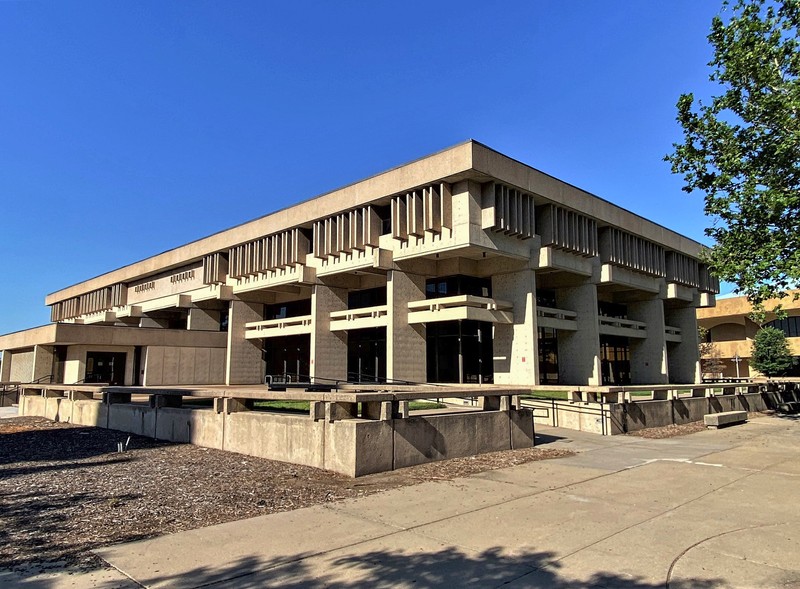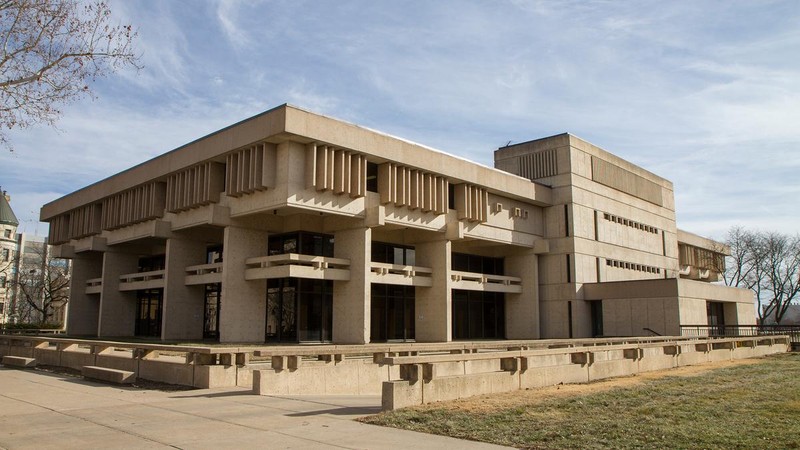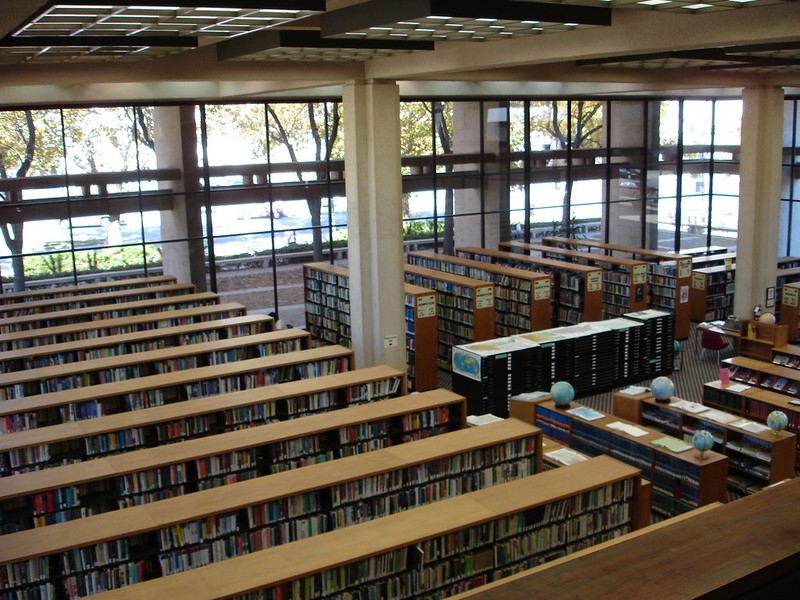Wichita Central Library (1967-2018)
Introduction
Text-to-speech Audio
Designed in the 1960s in the Brutalist style of architecture which was popular and considered modern at the time, this building was the home of the downtown Wichita library for fifty years. Built to be plain yet functional, much of this four-story structure is made of glass, letting in natural light and making the space inside feel inviting and open. In the 21st century, the public library system moved the central branch to the nearby Advanced Learning branch in order to expand to a larger building. The former Central branch has been vacant since 2018 other than serving as a temporary COVID-19 vaccine clinic in 2021.
Images
Wichita Central Library opened in 1967

This building served as the home of Wichita Central Library until 2018

The Central Library's first-level stacks

Backstory and Context
Text-to-speech Audio
Wichita's Carnegie Library was a staple of the local community ever since it opened in 1915. As Wichita's growth as a city skyrocketed in the following decades, however, this library began to struggle in meeting the literacy needs of the rising population. Despite satellite locations across the city picking up some of the slack, the Carnegie Library was "bursting at the seams" with the sheer amount of books and other material it had become expected to carry. Even study rooms and comfortable reading areas were overpowered by the branch's growing amount of stacks. Much of the funding for the new branch was secured through bonds and Federal Urban Renewal Grants beginning in 1961.
The architects of this building were Schaefer, Schirmer & Eflin Architects, a greatly renowned architectural firm throughout the 1960s and 1970s. While they were better known for Modernist work, which they were especially acclaimed for, they chose a Brutalist design for the new library. While this was an unusual choice for the firm, which had not worked on any buildings in this style before this one, they picked it because of its newfound popularity. The style had become more famous after being used in the design for Boston's City Hall. Brutalist buildings like this one are minimalist and prioritize showcasing the internal structures, in this case, concrete, over external decorations. While the Brutalist style has been criticized elsewhere for being unfriendly, this building avoids that by featuring numerous windows on all sides and stories. This lets patrons enjoy natural light no matter where they were in the library. Ground was broken in 1965 and the finished building opened for business two years later.
By the 21st century, it became clear to city officials that this library would soon meet a similar fate as the Carnegie Library. An initial plan to build a new central location at 2nd Street and McLean fell through in the recession, causing efforts to shift to expansion, but by 2011 this was shown to be too expensive an option to be viable. Funding was finally secured in 2015 and the Advanced Learning Library opened in 2018, one month after the Central Branch closed following fifty years of service. Apart from being used as a COVID-19 vaccination site during initial vaccine rollouts in 2021, the former library has been empty ever since that time.
Sources
McLaughlin, Robert. Wichita Public Library: Main Branch - National Register of Historic Places Registration Form, Kansas Historical Society. May 1st, 2020. Accessed February 4th, 2023. https://www.kshs.org/resource/national_register/nominationsNRDB/KS_SedgwickCounty_WichitaPublicLibrary_Listed_10022020.pdf.
Wikimedia
The Business Journals
Michael Sauers - Flickr
